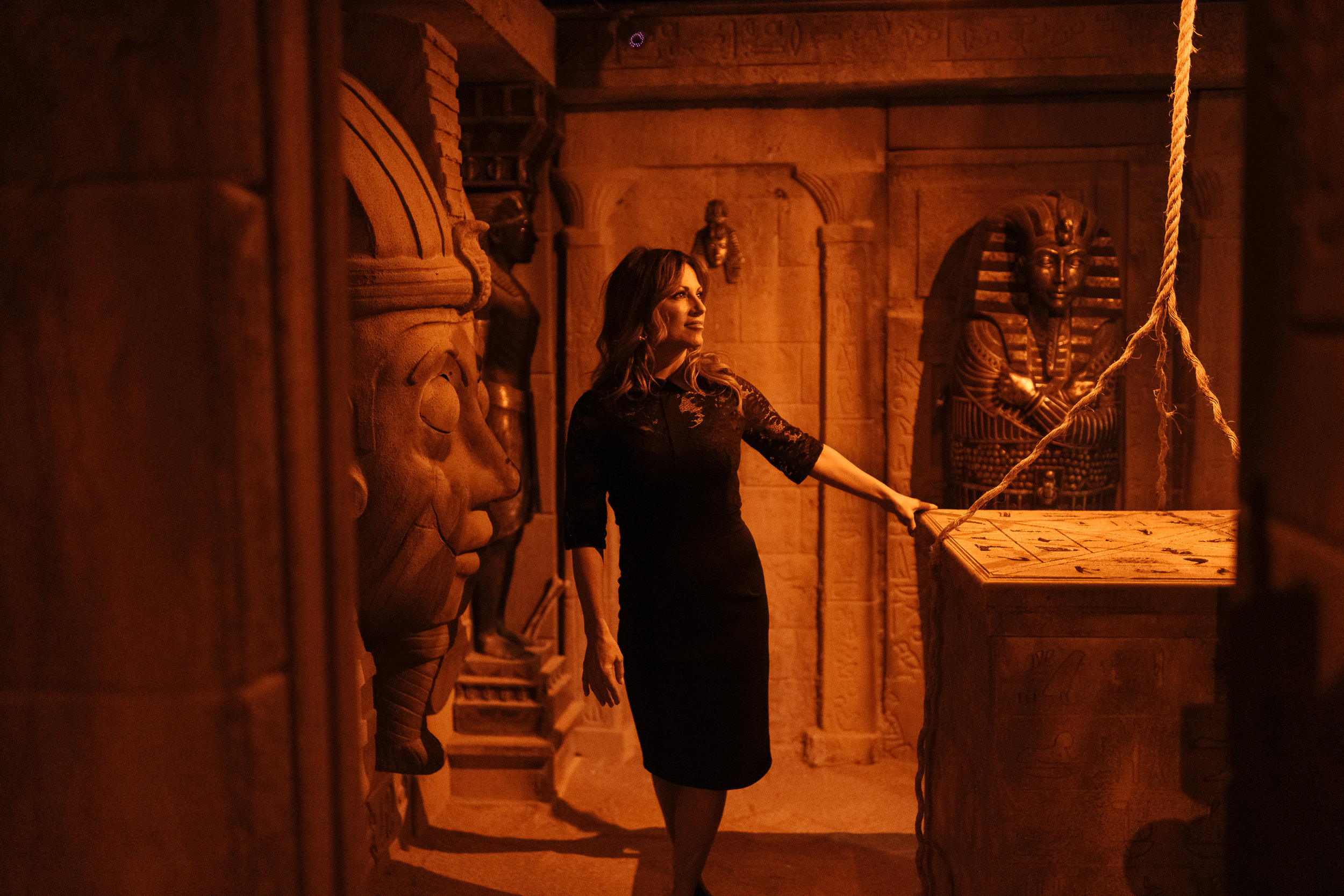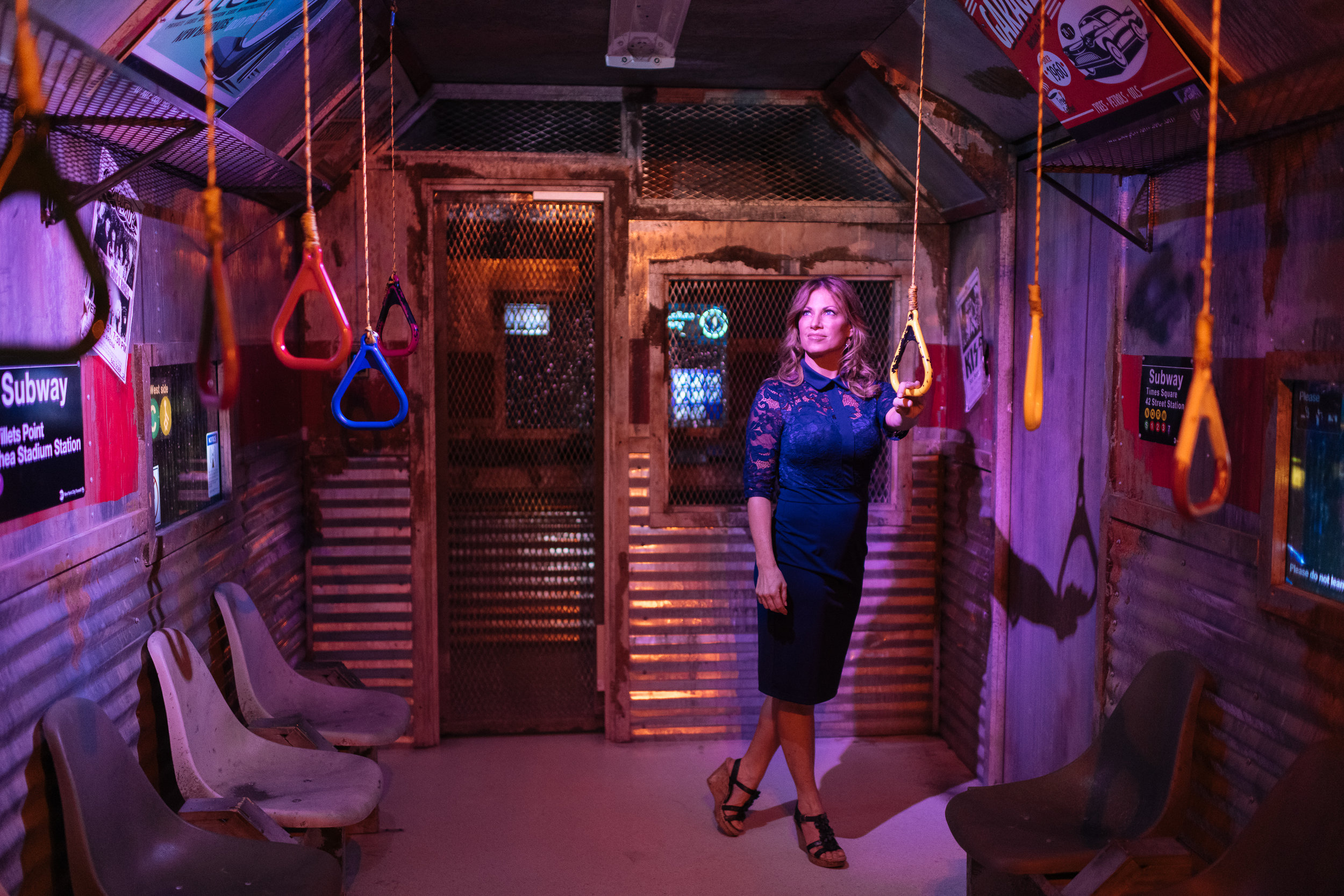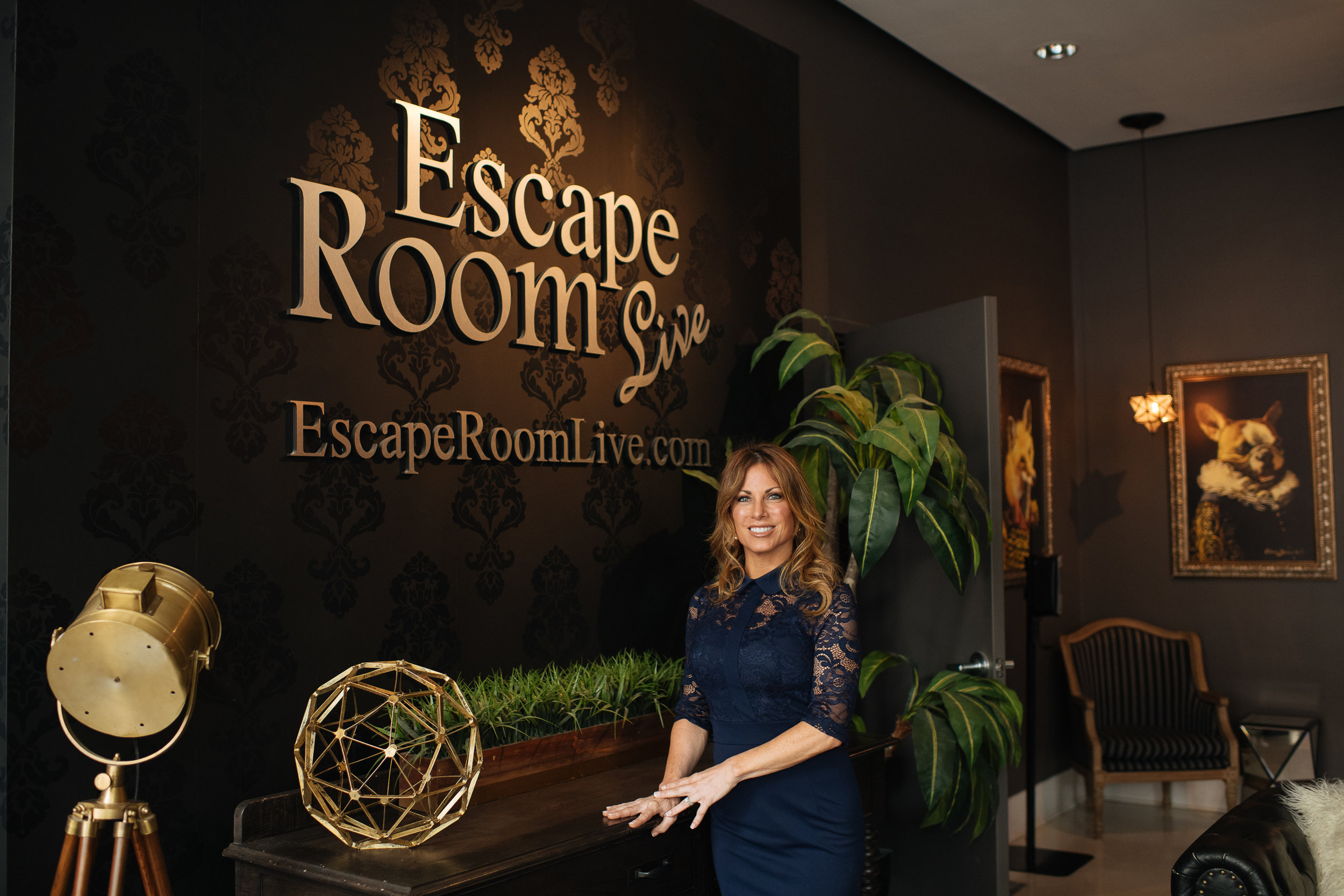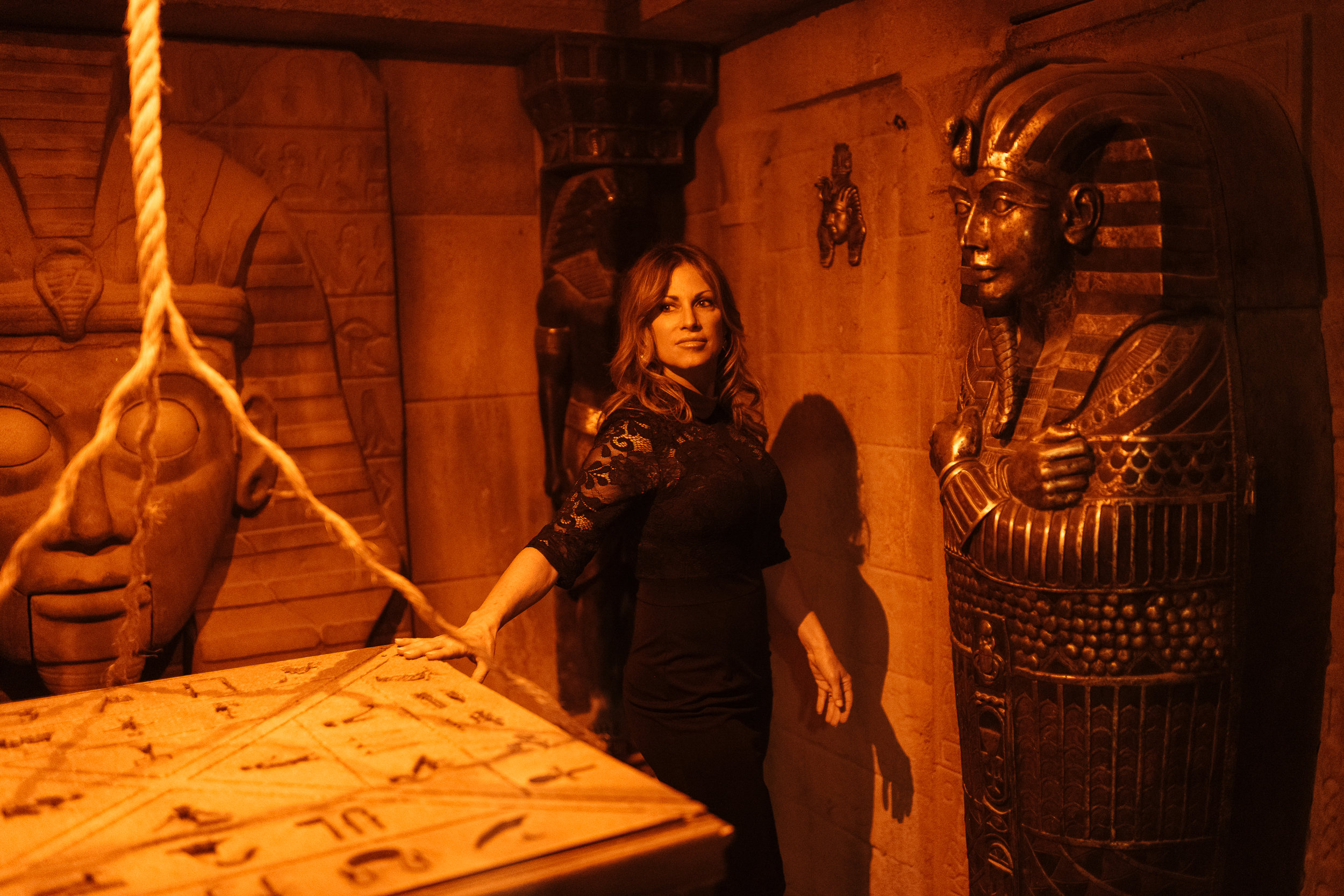‘I Loved Every Kind of Puzzle Growing Up’
Ginger Flesher-Sonnier
Escape Room Live Georgetown
3345 M St NW
After 20 years teaching public school math, Ginger Flesher-Sonnier was struggling with an unexpected retirement. Her husband had accepted a job as an intelligence agent in DC, uprooting their lives in South Carolina for work that frequently took him overseas—and left Ginger really bored, really quickly.
Finally able to join him on a three-month stint in Europe in 2014, Ginger searched for fun things to do every weekend. In each city she visited, escape rooms were the No. 1 activity on TripAdvisor.
‘It was intriguing to me as a former math teacher who loves puzzles. We went to one and my husband hated it, and I fell in love. We kept doing them in every city, and I kept thinking how I could improve it, make puzzles that weren’t impossible to solve without asking for help, and create more beautiful spaces with nice lobbies and lounges.’
By the time Ginger and her husband returned to DC, she’d already created a website and formed an Escape Room Live LLC. The concept was still largely unfamiliar in the U.S., and Ginger knew the timing was perfect. Two months after opening her first location in Glover Park, competing businesses were following suit.
What Ginger lacked in experience, she made up for in creativity—drawing on her childhood, and time in the classroom, to design the room puzzles herself.
‘I loved every kind of puzzle growing up, especially brain teasers, and I had a whole bulletin board full of them as a teacher. I wanted to share my love of puzzles with my students, who would get bonus points each marking period if they completed them. I pulled a lot of things from there for the escape rooms.’
Despite her passion, Ginger considered walking away several times that first year—overwhelmed by nearly single-handedly running a business that was quickly outgrowing its space.
‘The stress level was so bad, I think I adapted to the cortisol. A lot of it was flying blind, but I quickly learned to fill my weaknesses with strong people.’
Backed by a new director of operations, accountant, and marketing manager, Ginger started searching for a flagship location.
‘Most landlords we approached had never heard of them before, but Philippe Lanier at Eastbanc knew exactly what they were because his wife had been to one in Russia, and he was actively looking for an escape room for Georgetown. It worked out really well.’
With more capacity to grow the business—both physically and creatively—Ginger left the day-to-day operations to her team, and hired a puzzle-hunt writer as her co-creator.
‘It’s better because we bounce things off each other. You think of a theme and cohesive story line and kind of work backwards. Some of the puzzles are number-based, some are just creative. Then you mix in a lot of search-and-find things, putting things together in the room, or making a connection. We have so many creative tricks up our sleeves. It’s just a pleasure designing one of the rooms. It’s a lot of fun.’
Many of Georgetown’s escape rooms are modeled after blockbuster movies or universal adventures, like Titanic or The Pirate’s Curse. Ginger is also experimenting with a new, choose-your-own-adventure room—the first of its kind in the country, with live puppet interaction. For each room she works with a haunted house builder out of St. Louis, who creates a modular set based on the theme, then transports it to Georgetown for installation.
Ginger says mass appeal is key in design, despite industry advice to the contrary.
‘A lot of people said super scary rooms are the big sellers, but I don’t care—if there are jump scares, I don’t want to go into that room. Kid-friendly is important; I know when my daughter was little, I was always looking for something to do with her. I also wanted this to be accessible for team building and corporate events. A lot of the activities they typically do—trust falls, ropes courses, scavenger hunts around the city—are physically demanding for some people, and I don’t think that’s fair. These rooms are not physically demanding; everyone can participate.’
Technology has only further encouraged participation—transforming what was once very linear and basic game design, with physical locks on everything, into something more conducive for multi-player use.
‘Today, it’s all CGI affects, or you put your hands on something and an electro-magnetic sensor triggers a lock to open somewhere. We have augmented reality in two of the rooms. It has evolved so much and so quickly. It’s been exciting.’
Even still, Ginger acknowledges escape rooms aren’t for everyone—her husband included. For those who’d prefer to sip, not solve, the Georgetown location recently opened a full bar in its spacious lobby that’s open to all, with additional tables and games. Ginger is hopeful it will attract even more locals—already a surprisingly strong demographic.
She’s also branching out beyond escape rooms with a ‘retro Palm Beach vibe’ concept featuring indoor curling, shuffleboard, football bowling, and other backyard games, and a new axe-throwing venue opening in DC.
‘I’m taking the whole experiential thing and trying to expand it.’
Another puzzle, and she’s game.






